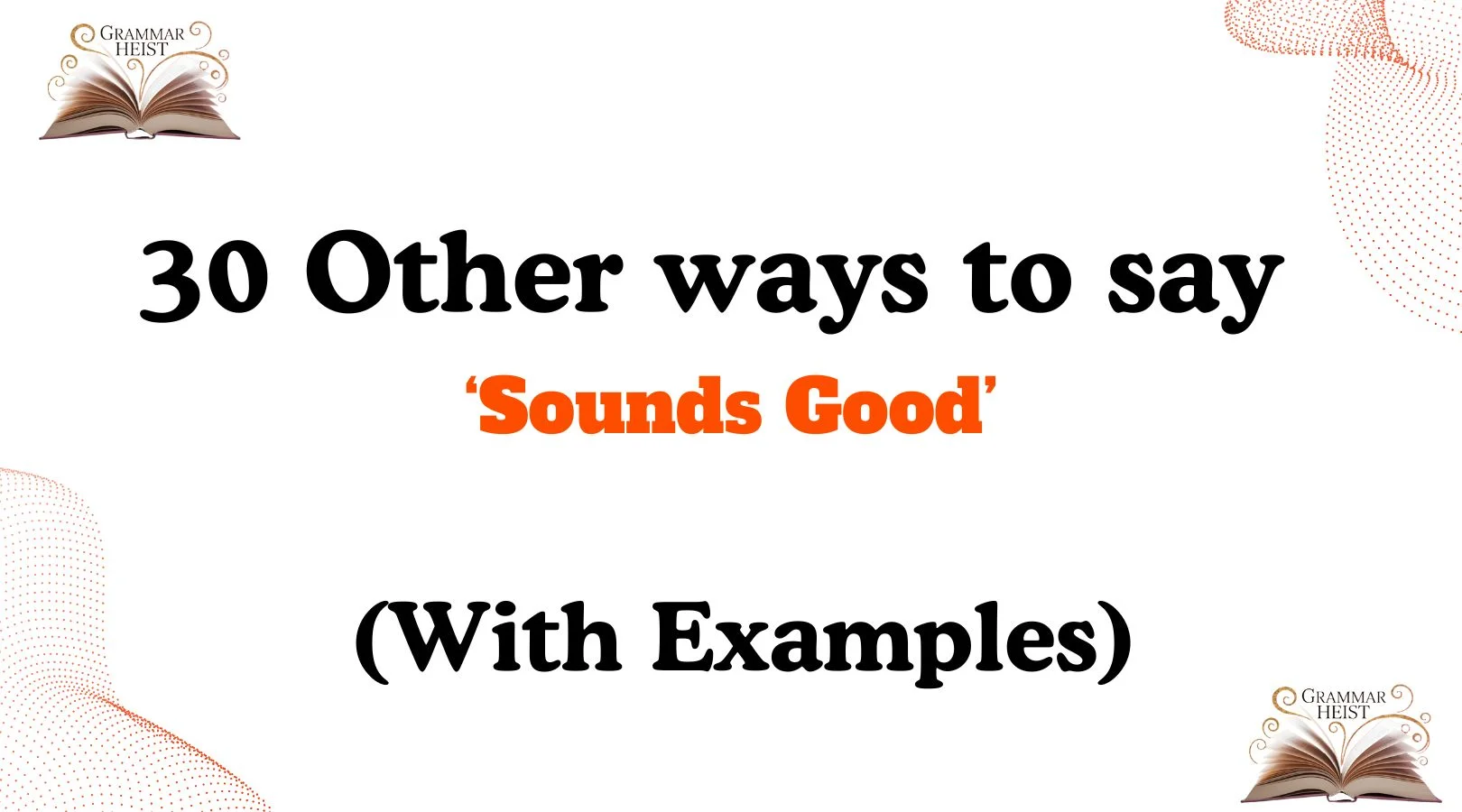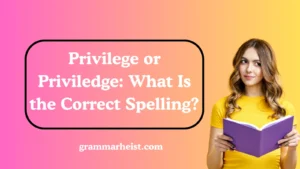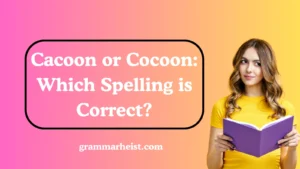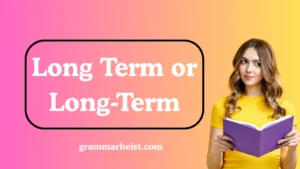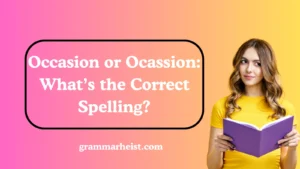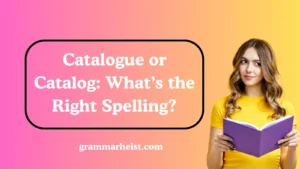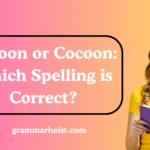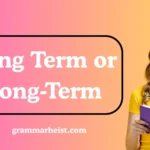Finding the right words to express warmth, understanding, and enthusiasm can make a message feel more personal and meaningful. Instead of always saying “sounds good”, there are many other ways to respond that reflect your tone, intent, and relationship with the person you’re speaking to. Whether you’re replying to a casual text or confirming something professionally, using thoughtful alternatives can help your communication feel more genuine and human.
What Does “Sounds Good” Mean?
The phrase “sounds good” is often used to agree, approve, or show that something works for you. It’s a friendly, positive, and casual way of saying you’re okay with a plan, suggestion, or idea. It can mean:
- “I agree with you.”
- “I’m happy with this plan.”
- “That works for me.”
People use it in everyday conversations, texts, and even work emails because it’s short, polite, and easy to say.
Is It Professional or Polite to Say “Sounds Good”?
Yes — “sounds good” is generally considered polite and acceptable in both casual and professional settings. ✅ It works well in friendly conversations, like making weekend plans. ✅ It’s also okay in workplace chats, though in formal emails or important meetings, you may want to use a more polished alternative like “That works for me” or “I agree with this approach.”
However, depending on the tone and context, it can sometimes sound a bit too casual — especially in professional settings with clients or higher-ups.
Pros or Cons of Saying “Sounds Good”
Pros:
- ✅ Friendly and approachable tone
- ✅ Easy and quick to use
- ✅ Shows agreement and positivity
Cons:
- ❌ May sound too casual in formal settings
- ❌ Might not fully express enthusiasm or clarity
- ❌ Can be overused and lose impact
Synonyms For “Sounds Good”
- That works for me
- I agree
- I’m on board
- Perfect
- That’s great
- Sounds perfect
- I’m good with that
- That’s fine by me
- All good
- That’s okay with me
- Absolutely
- Sure thing
- Sounds like a plan
- Deal
- Exactly
- Great idea
- I’m in
- Of course
- Why not
- I can do that
- That’s a plan
- I’m okay with that
- Let’s do it
- Alright
- Fair enough
- I’m down
- Count me in
- I’ll go along with that
- I like that
- Works for me
1. “That Works for Me”
Scenario: When someone suggests a time or plan, and you want to agree politely.
Examples:
- “Perfect, that works for me.”
- “Yes, that works for me. Thanks for setting it up!”
- “That works for me — looking forward to it.”
Tone: Warm, cooperative, polite.
Explanation: This phrase is simple but sounds more clear and professional than “sounds good.” It’s great for both work and casual chats.
2. “I Agree”
Scenario: When you want to show that you support someone’s idea or opinion.
Examples:
- “I agree — that’s a great approach.”
- “Yes, I agree with your plan.”
- “I agree, let’s move forward.”
Tone: Affirmative, respectful.
Explanation: A direct and clear phrase that works well in professional discussions and team conversations.
3. “I’m On Board”
Scenario: When joining a plan, idea, or decision enthusiastically.
Examples:
- “I’m on board with that plan.”
- “I’m on board — let’s make it happen.”
- “Sounds exciting, I’m on board!”
Tone: Supportive, enthusiastic.
Explanation: Shows team spirit and commitment, great for group projects or collaborations.
4. “Perfect”
Scenario: When something matches your expectations or feels just right.
Examples:
- “Perfect, see you then!”
- “Perfect, I love that idea.”
- “Perfect, thanks for letting me know.”
Tone: Positive, light, friendly.
Explanation: Short and cheerful, often used in texts or informal messages.
5. “That’s Great”
Scenario: When you want to express agreement with enthusiasm.
Examples:
- “That’s great, I’ll be there.”
- “That’s great, let’s do it.”
- “That’s great — thanks for confirming.”
Tone: Upbeat, friendly.
Explanation: Adds positivity and energy to your response.
6. “Sounds Perfect”
Scenario: When a plan or suggestion feels ideal.
Examples:
- “Sounds perfect, I’m in!”
- “Sounds perfect, thank you.”
- “Sounds perfect — can’t wait.”
Tone: Warm, approving.
Explanation: Slightly more enthusiastic than just “sounds good.”
7. “I’m Good with That”
Scenario: When agreeing casually but confidently.
Examples:
- “I’m good with that time.”
- “I’m good with that — let’s move forward.”
- “I’m good with that plan.”
Tone: Casual, confident.
Explanation: Ideal for everyday conversations with colleagues or friends.
8. “That’s Fine by Me”
Scenario: When you’re okay with a suggestion but not overly excited.
Examples:
- “That’s fine by me.”
- “Sure, that’s fine by me.”
- “That’s fine by me — I’m flexible.”
Tone: Neutral, agreeable.
Explanation: A gentle and polite way to say yes without strong emotion.
9. “All Good”
Scenario: When confirming that everything is fine.
Examples:
- “All good, see you then.”
- “All good on my end.”
- “All good — let’s do it.”
Tone: Casual, easygoing.
Explanation: Friendly and relaxed, perfect for informal chats.
10. “That’s Okay with Me”
Scenario: When showing acceptance or agreement.
Examples:
- “That’s okay with me.”
- “Sure, that’s okay with me.”
- “That’s okay with me, thank you.”
Tone: Polite, neutral.
Explanation: A respectful phrase that fits well in many settings.
11. “Absolutely”
Scenario: When agreeing strongly with excitement.
Examples:
- “Absolutely, I’ll be there.”
- “Absolutely, that’s a great plan.”
- “Absolutely — I support it.”
Tone: Strong, enthusiastic.
Explanation: Shows full support and confidence.
12. “Sure Thing”
Scenario: When replying casually to a suggestion or plan.
Examples:
- “Sure thing, see you soon.”
- “Sure thing, I’ll handle it.”
- “Sure thing — sounds fun.”
Tone: Friendly, informal.
Explanation: Works best in casual conversations.
13. “Sounds Like a Plan”
Scenario: When agreeing with a proposal or idea.
Examples:
- “Sounds like a plan!”
- “Sounds like a plan, let’s do it.”
- “Sounds like a plan to me.”
Tone: Friendly, light.
Explanation: Very similar to “sounds good” but with a slightly more enthusiastic twist.
14. “Deal”
Scenario: When agreeing quickly to something.
Examples:
- “Deal!”
- “Deal, I’ll bring the snacks.”
- “Deal — see you there.”
Tone: Casual, playful.
Explanation: Great for quick agreements with friends or colleagues.
15. “Exactly”
Scenario: When agreeing with a point or statement.
Examples:
- “Exactly, that’s what I was thinking.”
- “Exactly, you’re right.”
- “Exactly — let’s stick with this plan.”
Tone: Affirmative, confident.
Explanation: Strong way to show alignment or shared understanding.
16. “Great Idea”
Scenario: When responding positively to someone’s suggestion.
Examples:
- “Great idea, I’m in.”
- “Great idea, let’s do it.”
- “Great idea — love it!”
Tone: Enthusiastic, positive.
Explanation: Adds warmth and support to your agreement.
Read More:30 Other Ways to Say ‘I Agree with You’ (With Examples)
17. “I’m In”
Scenario: When you want to show excitement to join something.
Examples:
- “I’m in!”
- “I’m in, let’s do it.”
- “I’m in — sounds fun.”
Tone: Excited, enthusiastic.
Explanation: Great for casual or team settings.
18. “Of Course”
Scenario: When confirming something naturally.
Examples:
- “Of course, happy to help.”
- “Of course, that works.”
- “Of course — see you then.”
Tone: Warm, kind.
Explanation: Shows willingness and friendliness.
19. “Why Not”
Scenario: When agreeing casually or spontaneously.
Examples:
- “Why not, let’s do it.”
- “Why not — I’m free anyway.”
- “Why not, sounds fun.”
Tone: Playful, lighthearted.
Explanation: Good for friendly chats and informal settings.
20. “I Can Do That”
Scenario: When confirming you can follow through with something.
Examples:
- “I can do that.”
- “I can do that — no problem.”
- “I can do that for sure.”
Tone: Helpful, supportive.
Explanation: Clear and polite, works in professional settings.
21. “That’s a Plan”
Scenario: When agreeing to set plans.
Examples:
- “That’s a plan!”
- “That’s a plan, let’s lock it in.”
- “That’s a plan — I’m excited.”
Tone: Friendly, upbeat.
Explanation: Cheerful and informal, similar to “sounds like a plan.”
22. “I’m Okay with That”
Scenario: When accepting something with ease.
Examples:
- “I’m okay with that.”
- “I’m okay with that time.”
- “I’m okay with that plan.”
Tone: Neutral, polite.
Explanation: Simple and flexible.
23. “Let’s Do It”
Scenario: When expressing excitement to take action.
Examples:
- “Let’s do it!”
- “Let’s do it — I’m in.”
- “Let’s do it, can’t wait.”
Tone: Energetic, enthusiastic.
Explanation: Great for motivating and casual moments.
24. “Alright”
Scenario: When casually agreeing or confirming.
Examples:
- “Alright, see you soon.”
- “Alright, works for me.”
- “Alright — let’s go ahead.”
Tone: Casual, friendly.
Explanation: Easy and natural response.
25. “Fair Enough”
Scenario: When accepting something with understanding.
Examples:
- “Fair enough.”
- “Fair enough, let’s go with that.”
- “Fair enough — I get it.”
Tone: Neutral, thoughtful.
Explanation: Shows acceptance without over-excitement.
26. “I’m Down”
Scenario: When agreeing casually with friends.
Examples:
- “I’m down!”
- “I’m down — sounds fun.”
- “I’m down for that.”
Tone: Playful, informal.
Explanation: Common in casual conversations, especially among younger people.
27. “Count Me In”
Scenario: When volunteering or agreeing enthusiastically.
Examples:
- “Count me in!”
- “Count me in — I’d love to join.”
- “Count me in for sure.”
Tone: Warm, energetic.
Explanation: Expresses eagerness to participate.
28. “I’ll Go Along with That”
Scenario: When agreeing politely.
Examples:
- “I’ll go along with that.”
- “I’ll go along with that plan.”
- “I’ll go along with that — no issues.”
Tone: Gentle, neutral.
Explanation: Good for polite agreement without strong emotions.
29. “I Like That”
Scenario: When showing support or approval.
Examples:
- “I like that idea.”
- “I like that, let’s do it.”
- “I like that — good choice.”
Tone: Warm, approving.
Explanation: Simple and positive way to agree.
30. “Works for Me”
Scenario: When confirming something easily.
Examples:
- “Works for me.”
- “Works for me — see you then.”
- “Works for me, thanks.”
Tone: Easygoing, polite.
Explanation: One of the closest alternatives to “sounds good.”
📝 Conclusion
The phrase “sounds good” is a friendly and common way to agree, but using different expressions can make your communication feel more personal, clear, and warm. Whether you’re in a casual chat, professional setting, or making plans with friends, these 30 thoughtful alternatives help you express agreement with the right tone. A little variety can make your messages stand out — and feel more meaningful.

Emma Brooke is a passionate advocate for effective communication and language mastery. As a dedicated professional in the field of grammar and writing, Emma brings a wealth of knowledge and expertise to those seeking to improve their linguistic skills. With a focus on clarity, precision, and style, Emma Brooke is committed to helping individuals refine their language use to communicate confidently and effectively.
